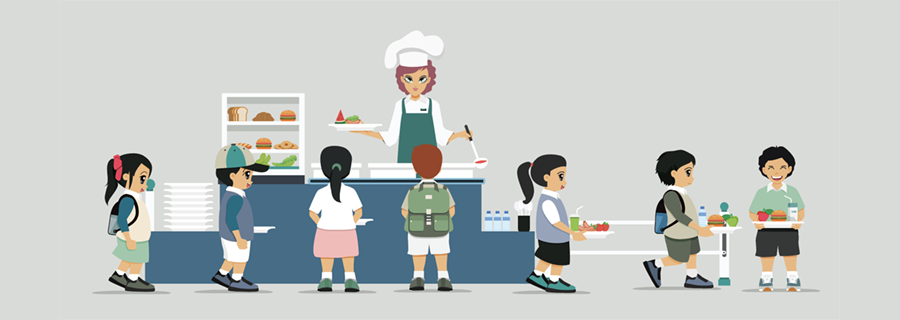
Belongingness is a big deal for every individual. When people feel like they belong to a place or group, they express, share, contribute, and give their best. Students are not exempt from this. Students can give their best when they feel they belong to their school, classroom, playground, sports team, band, cheerleaders club, music, or other clubs or groups. That means the first and most important step that we must take is to create an environment of belongingness for ALL students in all spaces of our schools.
The cafeteria is a favorite place for students, and most students dream of buying lunch. It is a place where they interact with their peers, socialize, and reset physically and mentally for the second half of the school. The food they eat in the cafeteria significantly affects how they learn in the afternoon. Many students don’t always enjoy the food provided in school cafeterias, and a good quantity ends up in the waste bins.
One of the reasons why students do not like the food provided in the cafeteria is because it doesn’t reflect their cultural practices. Students from different ethnicities eat foods they have been eating since childhood. The food offered in school cafeterias is predominantly American and is not everyone’s preferred option. Without many choices, students adapt and buy the food if they want to eat or bring lunch from home. Students who bring lunch every day are subject to teasing by peers. That is why some students do not open boxes and eat their food during lunch. This is a big inequity issue.
Students have restrictions on many things, such as vegan, vegetarian, gluten-free, dairy-free, kosher, Jain, etc. By not providing options to buy meals that meet the dietary needs of all students, cafeterias are excluding students. By not providing culturally responsive meals to students who have restrictions due to religious and cultural reasons, cafeterias are excluding students. Additionally, some students will finish their elementary education with an “unfulfilled dream of buying lunch in the cafeteria.”
Teachers use Universal Design Learning Strategies in the classrooms to create an opportunity to learn according to their learning styles; it is important that cafeterias provide meal options to students based on their dietary needs due to health and religious and cultural reasons. This helps to create a belongingness environment for ALL students in cafeterias, another learning space for students, teachers, and adults.